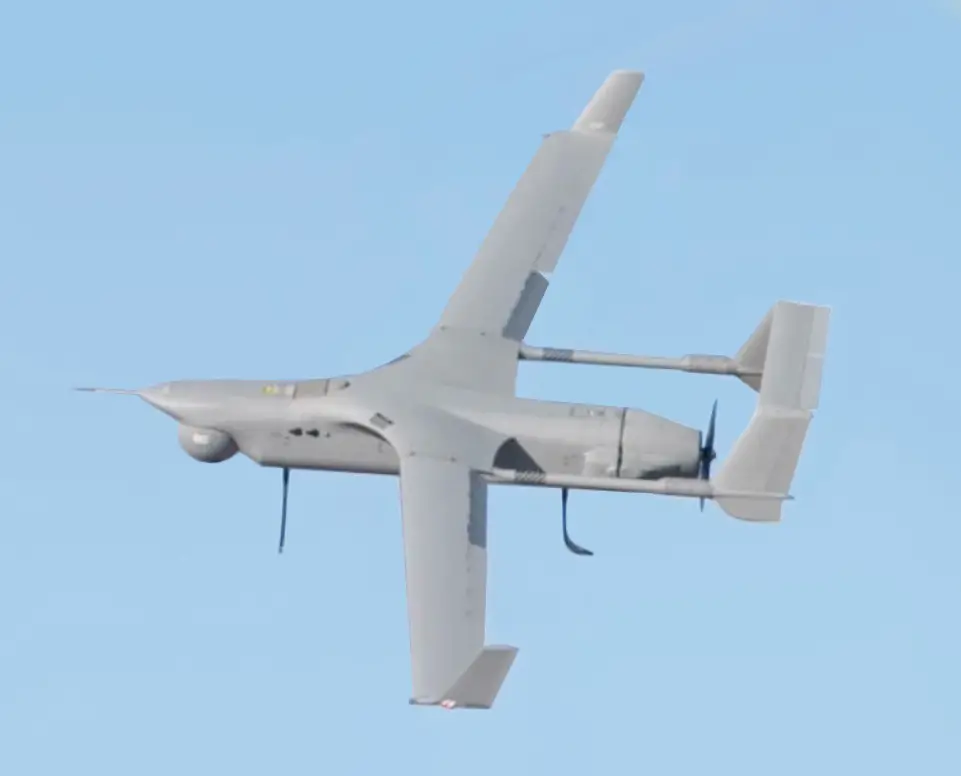The Royal Thai Navy (RTN) has ordered the Insitu RQ-21 Blackjack tactical unmanned aerial vehicle (UAV), which are expected to arrive in 2021. Thailand is the first country in the Indo-Pacific to field the RQ-21 Blackjack Unmanned Aerial System, , which is only operated by the US Navy and US Marine Corps, the Royal Canadian Navy, the Royal Netherlands Army, and the Polish Land Forces. The RTN selects its personnel to undergo a training program with the system in the United States. These sailors completed a selective screening process, including rigorous English language testing, and will travel to the U.S. to attend training for the next 5 months to become the first RQ-21 Blackjack crewmembers for Thailand.
The Boeing Insitu RQ-21 Blackjack, formerly called the Integrator, is an American unmanned air vehicle designed and built by Boeing Insitu to meet a United States Navy requirement for a small tactical unmanned air system (STUAS). It is a twin-boom, single-engine monoplane, designed as a supplement to the Boeing Scan Eagle. The Integrator weighs 61 kg (134 lb) and uses the same launcher and recovery system as the Scan Eagle. The RQ-21A Blackjack is designed to support the U.S. Marine Corps by providing forward reconnaissance. A Blackjack system is composed of five air vehicles and two ground control systems. The air vehicles can be launched on land or on a ship by a rail and land using a “skyhook” recovery system, where a vertical wire must be hooked onto its wing; when on the ground, the launch and recovery systems are towable by vehicles.

The Boeing Insitu RQ-21 Blackjack wingspan is 16 ft (4.9 m) and it can carry a 39 lb (18 kg) payload. The day/night camera can achieve resolution rating of 7 on the NIIRS scale at 8,000 ft (2,400 m).The Marines are working with Insitu to modify the Blackjack fuselage to carry greater and more various payloads. Enlarging the fuselage would increase its maximum takeoff weight from 135 lb (61 kg) to 145 lb (66 kg) and lengthen endurance from 16 hours to 24 hours. New turrets are being explored as well as other payloads including a synthetic-aperture radar to track ground targets, a laser designator to mark targets for precision-guided munitions, and foliage-penetration capabilities for foreign customers operating in lush environments.
The Office of Naval Research (ONR) plans to add a sensor to the Blackjack that combines an electro-optical camera, wide area imager, short wave infrared hyperspectral imager, and a high-resolution camera for use as an inspection sensor into a single payload by 2020. In Marines service, the Blackjack sometimes uses the designation MQ-21, where the ‘M’ prefix indicates “ground launched, mobile” operations, versus the ‘R’ prefix indicating operating from a surface ship. The U.S. Marine Corps deployed its first RQ-21A Blackjack system to Afghanistan in late April 2014. The Marine Corps declared Initial Operational Capability (IOC) for the RQ-21A Blackjack in January 2016.
















